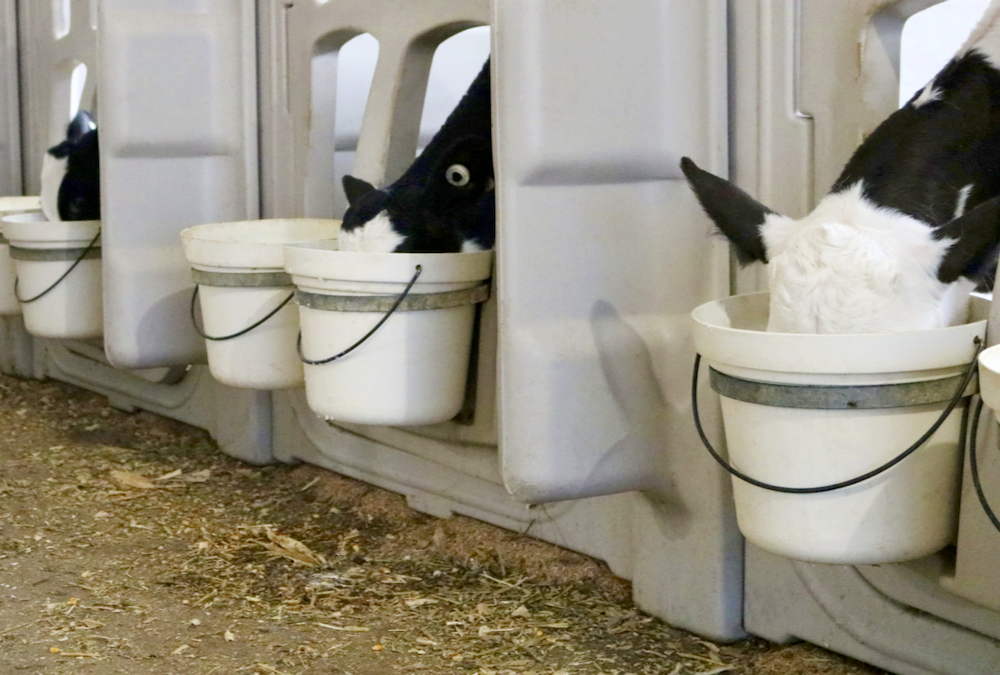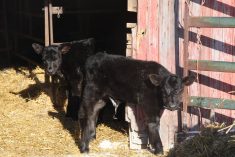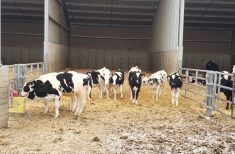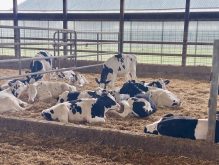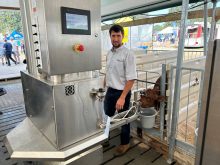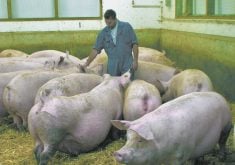Nutrition, health and welfare are three pillars of dairy calf research at the University of Guelph.
Members of the cross-faculty Dairy at Guelph group are focusing on this trifecta and conducting rigorous research designed to help dairy farmers and industry advisors improve calf management.
Nutrition
Read Also

From fleece to fertile ground
Lindsey Weber turns Canadian wool into sustainable, biodegradable weed suppression and horticulture alternatives to plastic, boosting farm sustainability and revitalizing Canada’s wool industry.
Dr. Michael Steele, animal biosciences professor at the Ontario Agricultural College, says it’s time to revisit the standard recommendations for colostrum feeding.
“I think we should be feeding a lot more colostrum than we currently recommend and there should be a transition from colostrum to milk,” he says.
Why it matters: Improving calf nutrition, health and welfare benefits future performance.
His research shows a positive relationship between improved average daily gain during the pre-weaning period and lifetime performance.
Steele stresses the importance of tracking colostrum quality and quantity. He recommends producers strive for a Brix score of more than 22 per cent, 60 grams per litre immunoglobulin G (IgG) and feeding at least 10 per cent of birth body weight in the first 12 hours.
Since speed matters, feeding in the first hour and providing a second meal at 12 hours is best, he says.
A recent study of on-farm passive transfer assessment confirmed that serum total protein (STP) estimations are accurate in calves fed maternal colostrum but not in those fed colostrum replacer.
Steele encourages producers to sample calves between 24 hours and three days of life to be as accurate as possible.
Another recent study showed that enriching low quality maternal colostrum with a dry colostrum source is a feasible strategy to ensure passive transfer.
Steele’s lab is also investigating the implications of extending colostrum feeding. When colostrum and milk mixtures are fed for up to 14 days, intestinal development, body weight and average daily gain improves and the risk of mortality decreases.
“I think it’s a really interesting concept to feed animals differently in the first two weeks of life before they go purely on a milk and concentrate diet,” says Steele.
But he also notes the importance of feeding high levels of milk in the first four weeks of life. Research indicates that not feeding enough milk depresses growth when calves do not consume enough starter to grow at high rates.
Steele advises producers that feed high levels of milk to wean later.
“Step down protocols should be greater than two weeks, with multiple steps,” he says. “Consider group housing and feed a high concentrate diet but keep an eye on the starch to keep it below 30 per cent.”
Health
Diarrhea in calves is a key area of study for Dr. David Renaud, assistant professor in the department of population medicine at the Ontario Veterinary College.
“It’s not surprising that diarrhea is quite costly and has a big impact,” he says. “It is more than just pathogen exposure as there are certain things done around the time of birth, in particular, that are creating microbial environments or certain bacteria that increase the likelihood.”
A recent study followed more than 2,600 calves for 28 days after they arrived at a research facility. In the pre-weaning period, more days of diarrhea caused increased mortality rates, slower growth and increased use of antibiotics.
Since conception and milk production are also impacted long term, Renaud urges producers to take action to prevent diarrhea.
“Colostrum management can have a really big influence on not only having passive immunity and protective immunoglobulins present to protect against disease, but also the development of bacterial species in the gut, further preventing diarrhea,” he says.
Feeding a high plane of milk nutrition, maintaining a clean environment and possibly direct feeding microbials or transition milk are other ways to protect against diarrhea but prevention will never be 100 per cent, says Renaud.
When diarrhea does occur, oral electrolytes are critical to protect against dehydration.
He is also studying whether colostrum can be used as a therapy to replace antimicrobials. Research has shown that after the onset of diarrhea, feeding an equal mixture of colostrum and milk for eight feedings resolved diarrhea nearly two days sooner and led to higher body weight in the long term, compared to the control group.
Welfare
Dr. Charlotte Winder, assistant professor in the OVC’s department of population medicine, reminds producers that calves experience acute and chronic pain that often causes inflammation.
Research indicates that giving a nonsteroidal anti-inflammatory drug (NSAID) to calves born from dystocia benefits their suckle response, weight and vigour.
Local anesthetics such as Lidocaine have been shown to reduce acute pain caused by all forms of disbudding.
Research also shows that calves benefit from a local anesthetic and NSAID for removal of extra teats. This could be done at the same time as disbudding, with pain control used for both procedures.
“Sedation is commonly recommended by industry and vet organizations but there really isn’t a plethora of research in the area,” Winder says, noting that studies on sedation show mixed results.
There are also a range of recommendations but little research on the best age for disbudding. Winder encourages producers to work with their vet to determine the most appropriate time.
A recent study showed calves on an elevated plane of milk nutrition healed faster after disbudding.
“It’s a real positive that we can do things to benefit calf health, growth and performance and also impact their welfare and experience of pain,” says Winder. “It benefits calves, the people who work with them and ultimately consumers and industry sustainability.”



